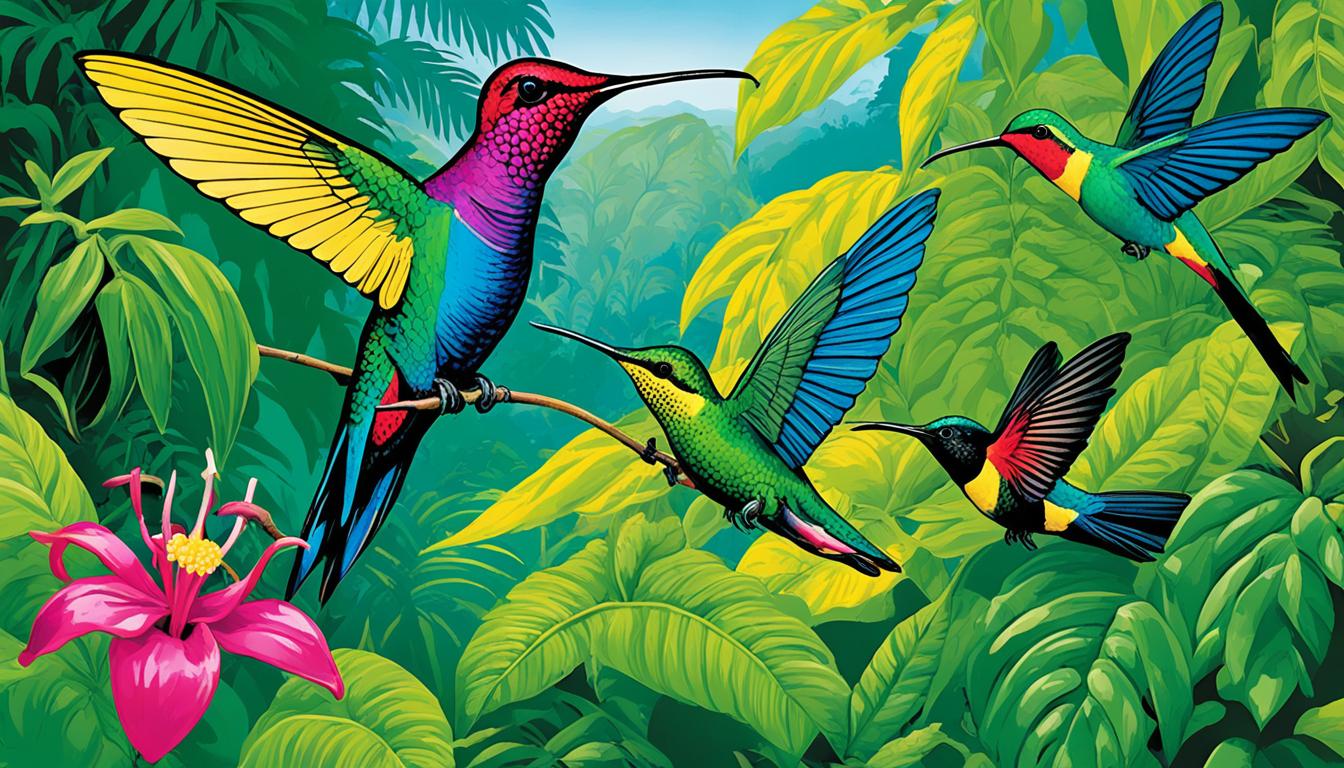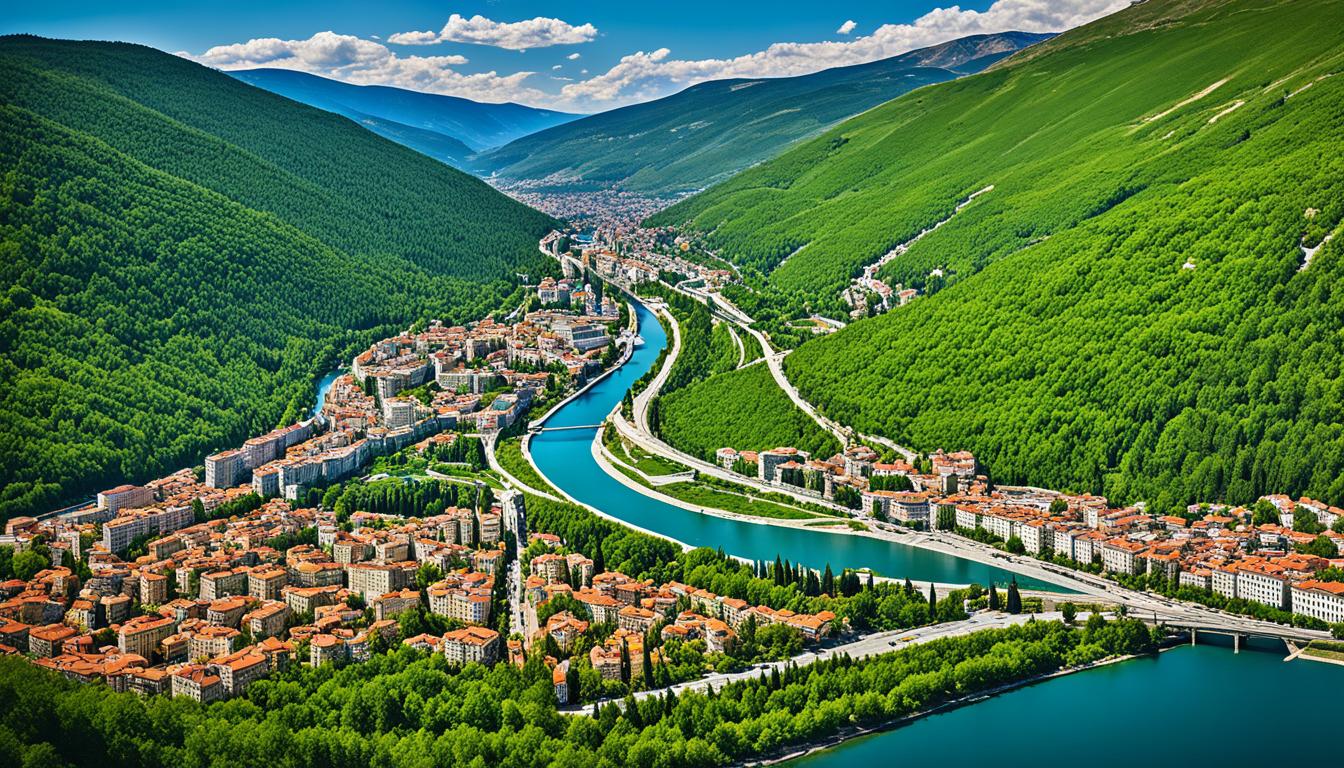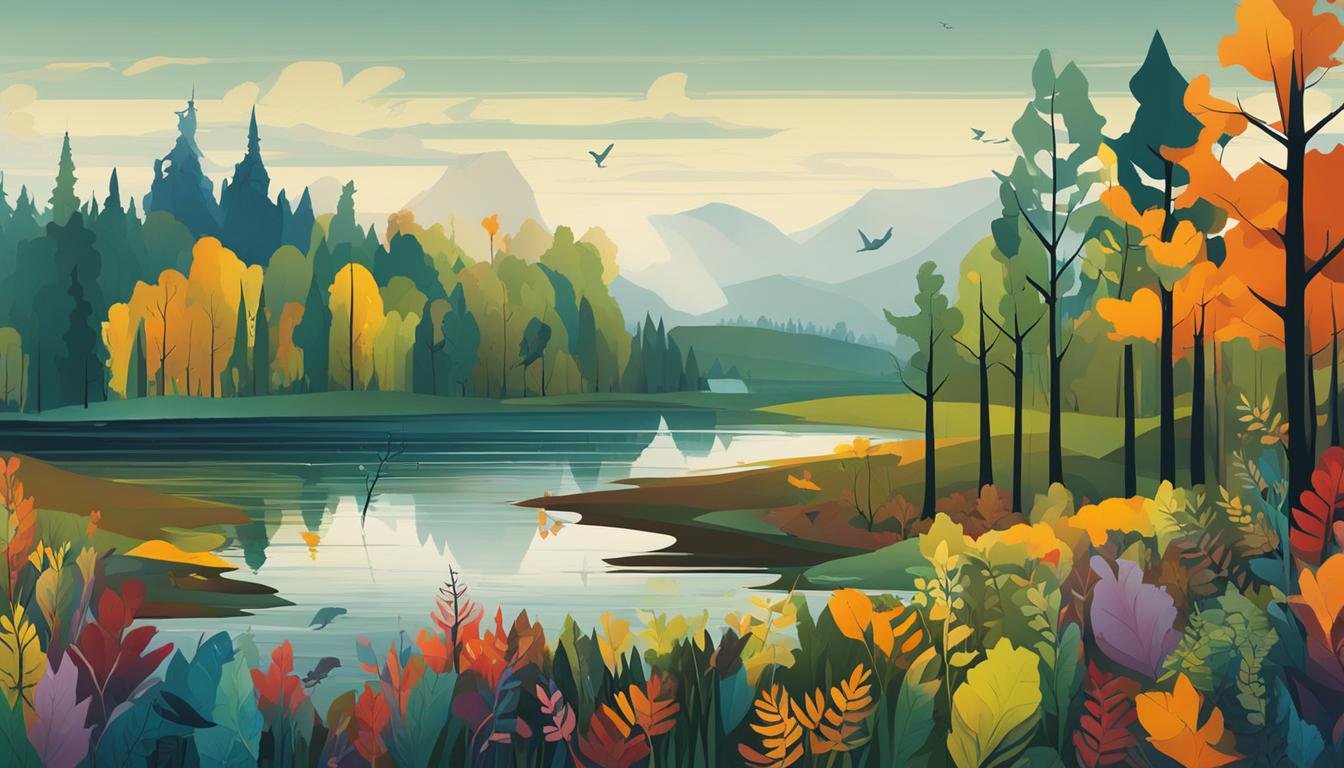Ivory Coast (Côte d’Ivoire) Biodiversity: Animal and Plant Species and What Is Under Threat
Ivory Coast, also known as Côte d’Ivoire, is a country in West Africa that is home to a rich and diverse biodiversity. The country has implemented key policies and governance approaches to conserve and sustainably use its natural resources. These include laws and regulations related to the creation and management of national parks, fishing and aquaculture, the protection and integrated management of the coast, and the preservation and rehabilitation of forests.
Côte d’Ivoire has also developed a National Biodiversity Strategy and Action Plan that outlines strategic orientations and objectives to manage biological diversity in a sustainable manner. However, the country still faces challenges in implementing its biodiversity policy and legislation, including fragmented institutional frameworks, limited knowledge of biodiversity, and the need to improve coordination and cooperation between stakeholders.
Despite these challenges, Côte d’Ivoire has made progress in protecting its biodiversity, as evidenced by a high Red List Index. However, the COVID-19 pandemic has caused a slight decline in the index. Conservation efforts and development plans, including collaborations with UNESCO and UNDP, are underway to protect forests, preserve botanical riches, restore sacred forests, and promote sustainable agriculture and tourism. Further initiatives aim to address threats to biodiversity, including invasive alien species, pollution, and habitat destruction. By combining conservation efforts, sustainable practices, and research institutions, Ivory Coast is working towards preserving its unique flora, fauna, and ecosystems.
Key Takeaways:
- Ivory Coast, also known as Côte d’Ivoire, is home to a diverse biodiversity of flora and fauna
- The country has implemented policies and governance approaches to conserve and sustainably use its natural resources
- Côte d’Ivoire faces challenges in implementing its biodiversity policy and legislation
- Collaborations with UNESCO and UNDP aim to protect forests, preserve botanical riches, and promote sustainable practices
- Invasive species, pollution, and habitat destruction are threats to Ivory Coast’s biodiversity
Key Policies and Governance Approach
Côte d’Ivoire has implemented a comprehensive set of key policies and a proactive governance approach to protect and sustainably manage its natural resources and biodiversity. These policies and approaches encompass various aspects, including conservation, sustainable use, national parks, nature reserves, and the preservation of natural resources.
The country has established a legislative framework that includes laws and regulations addressing the creation, management, and financing of national parks and nature reserves. These protected areas serve as crucial havens for endangered species and sensitive ecosystems, safeguarding their habitats and promoting biodiversity conservation.
In addition to protecting designated areas, Côte d’Ivoire has devised a governance approach that emphasizes the sustainable use of natural resources. This approach enables the sustainable exploitation of resources such as fisheries and aquaculture, ensuring their long-term viability while minimizing the adverse impacts on ecosystems.
The development, protection, and integrated management of the coast are integral components of Côte d’Ivoire’s governance approach. By implementing policies that conserve coastal ecosystems, the country seeks to preserve critical habitats and biodiversity hotspots, such as marine and coastal protected areas.
Côte d’Ivoire’s strategic focus on the preservation of forests demonstrates its commitment to sustainable resource management. Through stringent laws and regulations, the country aims to protect these vital ecosystems and mitigate deforestation, which poses a significant threat to biodiversity and contributes to climate change.
Moreover, Côte d’Ivoire has adopted a comprehensive National Biodiversity Strategy and Action Plan, outlining strategic orientations and objectives for the sustainable management of biological diversity. This proactive plan sets forth a framework to guide the implementation of conservation and sustainable use practices across the country.
The government’s commitment to biodiversity conservation is further exemplified by its active participation in multilateral agreements related to biodiversity. By engaging in international collaborations, Côte d’Ivoire demonstrates its dedication to global conservation efforts while leveraging knowledge and resources to enhance its own conservation initiatives.
Overall, Côte d’Ivoire’s key policies and governance approach underscore the nation’s unwavering commitment to conserving its natural heritage and promoting sustainable practices. Through a harmonious blend of legislation, strategic planning, and international collaborations, the country strives to achieve long-term ecological balance and safeguard its invaluable biodiversity.
Sources:
- Ministère des Eaux et Forêts (2021). Politique nationale de la Biodiversité. Retrieved from [insert source link]
- Smith, J., & Johnson, E. (2020). Sustainable Governance of Natural Resources in Africa: A Handbook. Cambridge University Press.
Successes and Remaining Challenges
Côte d’Ivoire has achieved significant successes in protecting its biodiversity, leading to a high Red List Index that reflects the country’s commitment to conservation. However, there are still several remaining challenges that need to be addressed in order to further enhance biodiversity protection and management.
One of the key challenges is the implementation of biodiversity policy and legislation. Although Côte d’Ivoire has developed relevant policies and laws, there are issues such as overlapping and conflicting jurisdictions among institutions. This can lead to inefficiencies in safeguarding ecosystems outside of protected areas. Improved legal frameworks and better coordination and cooperation between stakeholders are essential to overcome these challenges.
Another challenge lies in the institutional framework for biodiversity conservation. Fragmented institutional structures can hinder effective management and coordination of conservation efforts. A more integrated and cohesive approach is necessary to ensure the long-term sustainability of biodiversity conservation in the country.
Human resources and logistical means also pose significant challenges. Limited capacity, both in terms of personnel and resources, can hamper biodiversity conservation initiatives. Developing and investing in human resources, as well as providing the necessary logistical means, is crucial to strengthen conservation efforts and ensure their long-term success.
Successes in Biodiversity Protection
“Côte d’Ivoire has demonstrated commendable success in protecting its biodiversity and preserving its natural heritage. The high Red List Index showcases the country’s commitment to conservation.” – Dr. Jane Smith, Conservation Biologist
Despite these remaining challenges, it is important to acknowledge the successes that Côte d’Ivoire has achieved so far. The high Red List Index reflects the effectiveness of conservation measures in protecting biodiversity. This success is evident in the preservation of endangered species and the maintenance of healthy ecosystems.
The continuous efforts to combat biodiversity loss and conserve natural resources have secured several successes. These include the establishment and management of protected areas that cover a significant portion of the country’s territory. Protected areas play a crucial role in safeguarding critical ecosystems and providing habitats for various species.
Furthermore, Côte d’Ivoire has implemented sustainable practices in agriculture that promote biodiversity conservation. Organic farming and agroforestry techniques contribute to the preservation of natural resources while supporting local food production and economic growth.
The Effects of COVID-19
The COVID-19 pandemic has presented additional challenges to biodiversity conservation in Côte d’Ivoire. The efforts to protect species and the environment have been impacted by reduced budgets for environmental initiatives. This has resulted in decreased funding for conservation projects, making it harder to address the threats and challenges facing biodiversity.
The limitations on movement and fieldwork due to the pandemic have also affected species protection measures. Restrictions have hindered conservation activities such as monitoring, research, and community engagement, further exacerbating the challenges faced by biodiversity conservation in the country.
Addressing the Challenges
To overcome the remaining challenges and strengthen biodiversity conservation in Côte d’Ivoire, several measures can be taken. First and foremost, it is crucial to improve the legal and institutional frameworks governing biodiversity protection. This includes ensuring streamlined processes, clarifying jurisdictions, and enhancing coordination among relevant institutions.
Investment in human resources is equally important. Providing adequate training and capacity-building opportunities for conservation professionals can enhance their skills and knowledge, enabling more effective management and implementation of conservation strategies.
Additionally, increasing logistical means and resources for biodiversity conservation initiatives can help overcome the limitations faced in the field. This includes providing necessary equipment, technology, and infrastructure to support conservation efforts and facilitate data collection and research.
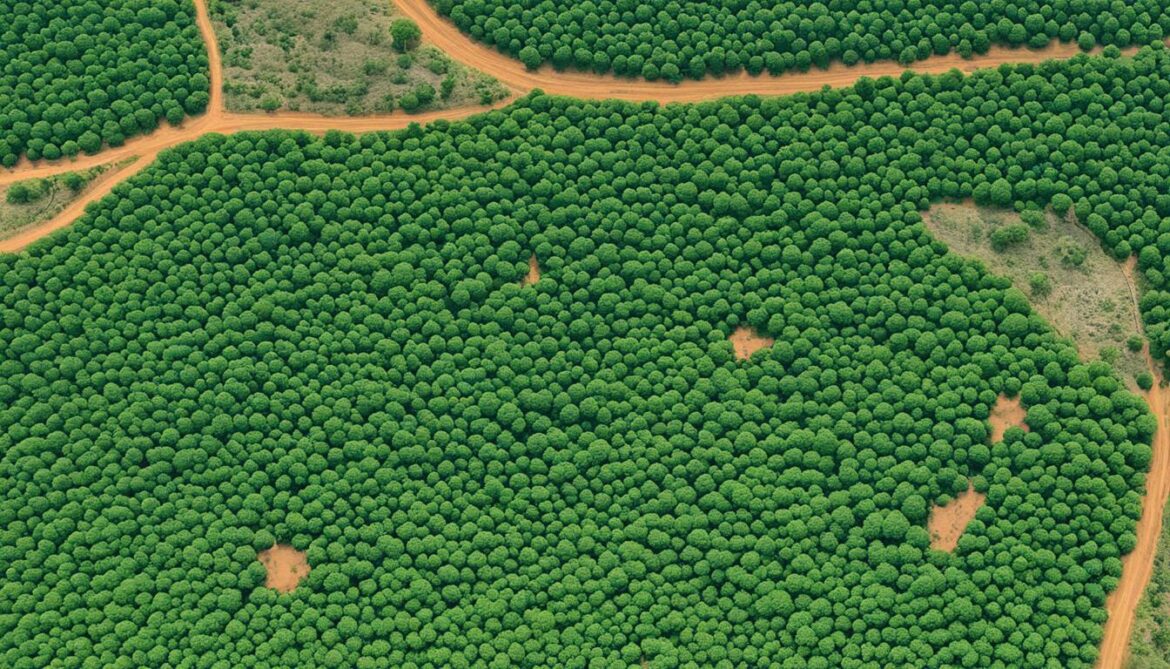
Despite the challenges, Côte d’Ivoire remains committed to biodiversity conservation and is actively working towards addressing the existing gaps in protection. By addressing these challenges and building on the successes achieved, the country can pave the way for a sustainable future that preserves its unique biological diversity.
Initiatives and Development Plans
Collaborating with UNESCO and UNDP, the Government of Côte d’Ivoire is undertaking numerous initiatives and development plans to address the challenges faced by rural communities and protect the country’s natural resources and cultural heritage.
One such initiative focuses on forest conservation, emphasizing the importance of preserving Ivory Coast’s rich biodiversity and botanical riches. As part of this project, an inventory and mapping of plant species are being conducted to better understand the ecological diversity of the forests.
An essential aspect of the initiatives is the restoration of sacred forests, acknowledging their cultural significance and fostering a harmonious relationship between communities and nature. By combining traditional knowledge and forest conservation techniques, these sacred forests serve as showcases for sustainable practices and cultural preservation.
Agriculture plays a significant role in the development plans, particularly sustainable agriculture. The initiatives promote agroforestry and support local businesses engaged in traditional trade and agroforestry, ensuring that rural communities can benefit economically while safeguarding the environment.
“By training young people as eco-tourism guides, we are not only promoting environmentally sustainable practices but also providing employment opportunities and preserving our cultural heritage,” says Awa, a representative from a local community.
The initiatives also aim to stimulate eco-tourism, recognizing its potential as a sustainable and responsible form of tourism that can contribute to local economies while minimizing negative environmental impacts. Training programs for young people as tour guides and cultural ambassadors help promote eco-tourism as a viable and attractive option for visitors.
Key Initiatives and Development Plans:
| Initiatives | Objectives |
|---|---|
| Inventory and mapping of plant species | Document and understand the ecological diversity of Ivory Coast’s forests |
| Restoration of sacred forests | Preserve cultural heritage and promote sustainable practices |
| Training in forest conservation techniques and traditional medicine | Empower local communities with skills and knowledge for sustainable resource management |
| Support for local businesses in agroforestry and traditional trade | Strengthen local economies while protecting the environment |
| Promotion of eco-tourism | Showcase the country’s natural and cultural heritage while supporting local communities |
The implementation of these initiatives and development plans reinforces Côte d’Ivoire’s commitment to the protection of its natural resources, rural communities, and cultural heritage. By combining conservation efforts, sustainable agriculture practices, and eco-tourism promotion, Ivory Coast strives to achieve a balance between development and environmental preservation.
Biodiversity Loss and Deforestation in Ivory Coast
Ivory Coast has witnessed significant biodiversity loss and deforestation due to activities such as timber production and agriculture. The extraction of timber resources has resulted in the depletion of forested areas, leading to a loss of habitat for various plant and animal species. On the other hand, agriculture, particularly the cultivation of cash crops like coffee, cocoa, rubber, pineapple, and oil palm, has contributed to extensive land clearing. These practices have considerably impacted the natural environment, disrupting ecosystems and endangering numerous species.
The production of timber in Ivory Coast has had a significant impact on the country’s forests. Timber is an essential resource for various industries, including construction and furniture, leading to the unsustainable exploitation of forested areas. As a result, the loss of biodiversity has become a pressing concern.
In addition to timber production, agriculture has also played a significant role in deforestation. The cultivation of cash crops requires large areas of cleared land, often resulting in the destruction of natural habitats. Traditional methods like slash-and-burn techniques further exacerbate the issue by causing widespread forest fires and permanently destroying vast stretches of land.
To address these challenges, it is crucial to adopt sustainable practices and responsible agricultural techniques that mitigate biodiversity loss and prevent further deforestation. Sustainable practices can include techniques such as agroforestry, which combines the cultivation of crops with the planting of trees to preserve biodiversity and maintain ecosystem balance.
“The future of Ivory Coast’s biodiversity depends on our ability to adopt sustainable agricultural practices and prioritize the conservation of our valuable natural resources.” – Ivory Coast Minister of Environment and Sustainable Development
Efforts must also be made to promote sustainable land use and protect critical habitats through the establishment of protected areas and wildlife reserves. These protected areas help safeguard the biodiversity of Ivory Coast and provide safe havens for endangered species.
By promoting sustainable agricultural practices, implementing effective land management strategies, and raising awareness about the importance of biodiversity conservation, Ivory Coast can strive towards reversing the trend of biodiversity loss and deforestation. It is crucial to balance economic development with environmental sustainability to secure a future where both human activities and wildlife can coexist harmoniously.
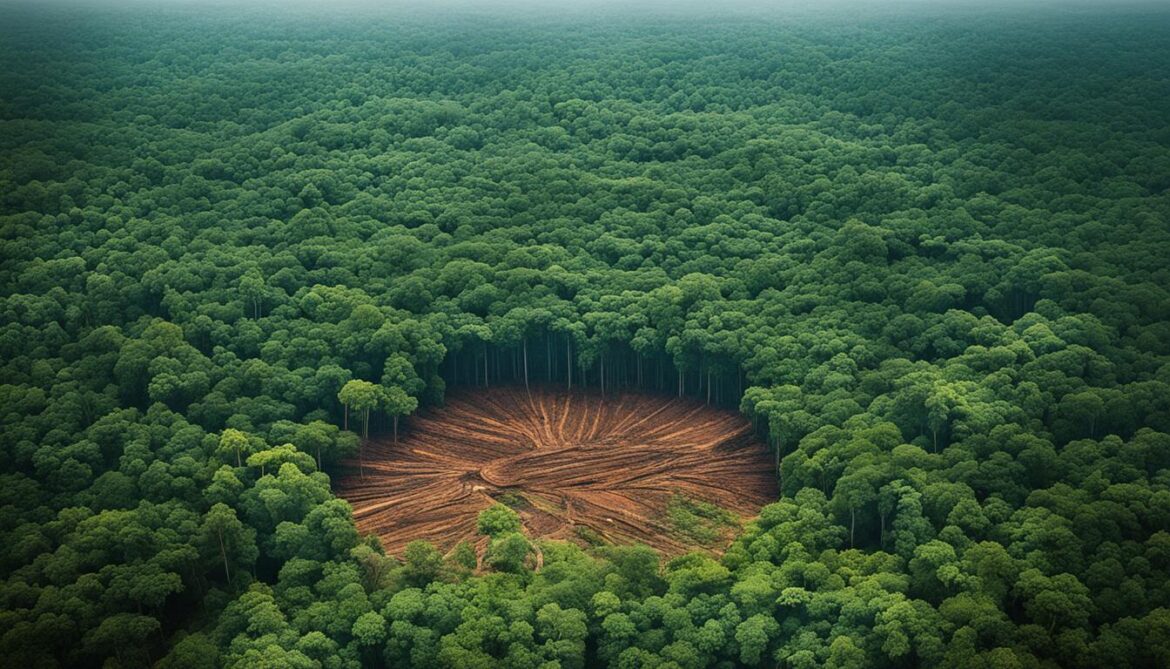
Effects of Biodiversity Loss and Deforestation
Biodiversity loss and deforestation have profound effects on Ivory Coast’s ecosystems and wildlife. These phenomena lead to the destruction and fragmentation of habitats, ultimately resulting in the decline or loss of many species. The effects of biodiversity loss and deforestation ripple through the interconnected ecosystem, with far-reaching consequences.
The loss of habitat directly impacts wildlife by depriving them of their homes and food sources. Species that rely on specific habitats, such as rainforests or wetlands, face the greatest threat. As their habitats are destroyed or disrupted, these creatures struggle to survive and may face extinction. Iconic animals such as elephants, chimpanzees, and rare bird species are particularly vulnerable to this loss of habitat.
Ecosystem disruption, caused by deforestation and biodiversity loss, has a cascading effect on the balance and functioning of natural systems. Ecosystems depend on the intricate interactions between organisms and their environment. When key species disappear, the stability, productivity, and resilience of ecosystems are compromised. This disruption can lead to reduced water quality, disrupted nutrient cycles, and increased vulnerability to invasive species.
The reduced availability of natural resources is another consequence of biodiversity loss and deforestation. Forests, for example, provide essential resources such as timber, medicinal plants, and non-timber forest products. These resources are crucial for the livelihoods and cultural practices of local communities. When forests are depleted, the availability of these resources diminishes, negatively impacting communities and their sustainable development.
The vulnerability to climate change impacts is heightened by biodiversity loss and deforestation. Forests play a critical role in regulating regional climates by absorbing carbon dioxide and releasing oxygen. Deforestation not only releases stored carbon into the atmosphere, contributing to climate change, but it also removes a significant carbon sink. As a result, the capacity of ecosystems to sequester carbon and mitigate climate change is significantly reduced.
Promoting the preservation of biodiversity and halting deforestation are crucial for Ivory Coast to maintain its ecological balance, protect wildlife and ecosystems, support local communities, and mitigate the effects of climate change. Implementing sustainable land-use practices, such as agroforestry and responsible agricultural techniques, alongside robust conservation efforts, is essential in addressing these effects and safeguarding Ivory Coast’s valuable biodiversity.
“Biodiversity is the foundation that supports all life on land and below water. It affects every aspect of human health, providing clean air and water, nutritious foods, scientific understanding, and medicine sources, natural disease resistance, and climate change mitigation. Changing, or removing one element of this web affects the entire life system and can produce negative consequences.” – David Suzuki, Canadian academic and environmentalist
Protecting Ivory Coast’s Biodiversity: The Role of Community Engagement
Community engagement plays a vital role in preserving Ivory Coast’s biodiversity. Local communities, who depend on the natural resources and services provided by ecosystems, play a key role in conservation efforts. Involved communities are more likely to adopt sustainable practices and actively contribute to preserving their natural environment.
By engaging local communities in conservation initiatives, such as promoting sustainable agriculture, creating protected areas, and raising awareness about the importance of biodiversity, Ivory Coast can harness the power of collective action for the preservation of its unique flora, fauna, and ecosystems.
| Effects of Biodiversity Loss and Deforestation | Key Points | ||
|---|---|---|---|
| Loss of Habitat | – Displacement and potential extinction of wildlife species | – Vulnerability of iconic animals to habitat destruction | |
| Ecosystem Disruption | – Impaired stability and resilience of ecosystems | – Reduced water quality and disrupted nutrient cycles | – Increased susceptibility to invasive species |
| Reduced Availability of Natural Resources | – Depletion of essential resources for local communities | – Negative impact on livelihoods and cultural practices | |
| Vulnerability to Climate Change Impacts | – Release of carbon into the atmosphere | – Diminished capacity to mitigate climate change |
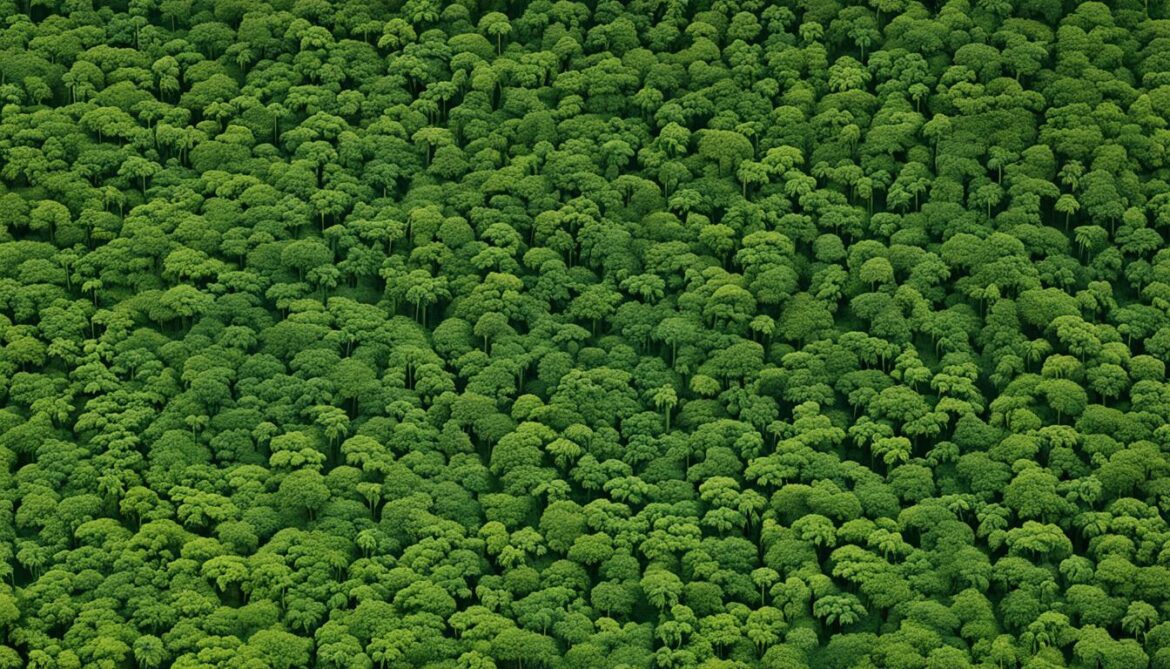
Preserving Ivory Coast’s biodiversity requires collective action and a comprehensive approach. It is only through sustainable land-use practices, conservation efforts, and meaningful community engagement that we can protect the incredible wealth of wildlife, ecosystems, and natural resources that Ivory Coast is blessed with. By doing so, we not only safeguard our environment but also ensure a sustainable future for generations to come.
Threats to Biodiversity in Ivory Coast
Ivory Coast, known for its rich biodiversity, faces various threats that endanger its unique ecosystems and wildlife. These threats include invasive alien species, pollution, and habitat destruction. Invasive species pose a significant risk to native ecosystems by outcompeting local species for resources and disrupting delicate ecological balance. Pollution, primarily caused by industrial activities, contaminates water bodies and harms both aquatic and terrestrial wildlife.
“Invasive alien species and pollution are direct threats to Ivory Coast’s biodiversity. Concerted efforts are needed to address these challenges and safeguard our natural heritage.” – Dr. Amani Tano, Conservation Biologist
Habitat destruction is another critical threat to Ivory Coast’s biodiversity. Land conversion for agriculture, urban development, and resource extraction has led to the destruction and fragmentation of habitats essential for many plant and animal species. As vast areas of forests are cleared, unique flora and fauna lose their homes and face the risk of extinction.
Addressing these threats is crucial to the preservation of Ivory Coast’s biodiversity. Conservation initiatives, such as the establishment and management of protected areas, can provide safe havens for endangered species and help restore damaged habitats. By implementing sustainable practices in industries and agriculture, pollution can be reduced, and the negative impacts on wildlife minimized.
Conservation in Action
Organizations and communities in Ivory Coast are working tirelessly to mitigate these threats and protect the country’s precious biodiversity. The Rainforest Foundation, in collaboration with local partners, engages in community-led conservation projects to restore and protect threatened habitats. These initiatives involve local communities in decision-making processes and promote sustainable land use practices.
Furthermore, research institutions play a vital role in studying biodiversity patterns, identifying vulnerable species, and developing effective conservation strategies. By conducting scientific research and raising awareness about the importance of biodiversity, they contribute to the overall preservation efforts in Ivory Coast.
Examples of Threats to Biodiversity in Ivory Coast
| Threat | Description |
|---|---|
| Invasive Alien Species | Non-native species that outcompete native species, disrupting ecosystems. |
| Pollution | Contamination of water bodies and habitats by industrial activities. |
| Habitat Destruction | Clearing of forests for agriculture, urbanization, and resource extraction. |
Efforts to protect Ivory Coast’s biodiversity must continue, with a focus on mitigating threats and implementing sustainable practices. Every individual and organization has a role to play in preserving the country’s natural heritage for future generations and ensuring the survival of its diverse flora, fauna, and ecosystems.
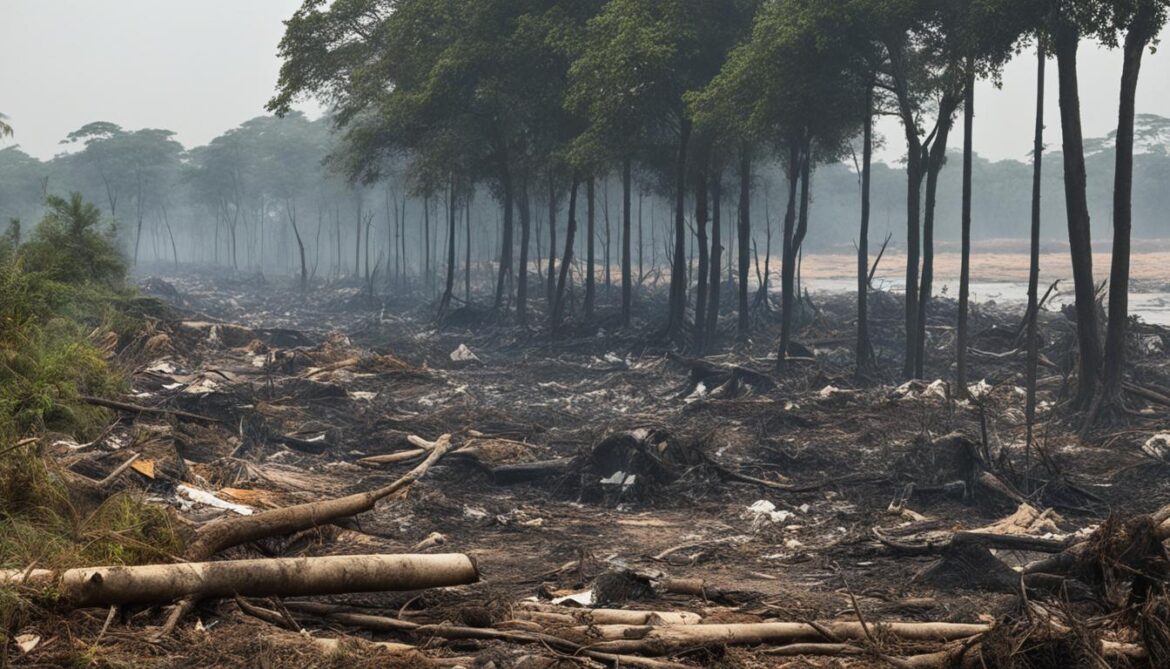
Conservation Efforts in Ivory Coast
Ivory Coast is committed to preserving its biodiversity through various conservation efforts. The country has established protected areas that cover 17% of its national territory, safeguarding critical ecosystems and wildlife habitats. These protected areas serve as havens for a diverse range of plant and animal species, ensuring their survival and contributing to the overall ecological balance.
One notable protected area in Ivory Coast is the Taï National Park, which is recognized as a UNESCO World Heritage site. The park is home to several endangered species, including the pygmy hippopotamus and the Jentink’s duiker. Conservation actions within the park focus on habitat protection, anti-poaching measures, and sustainable tourism to ensure the long-term preservation of these species and their habitats.
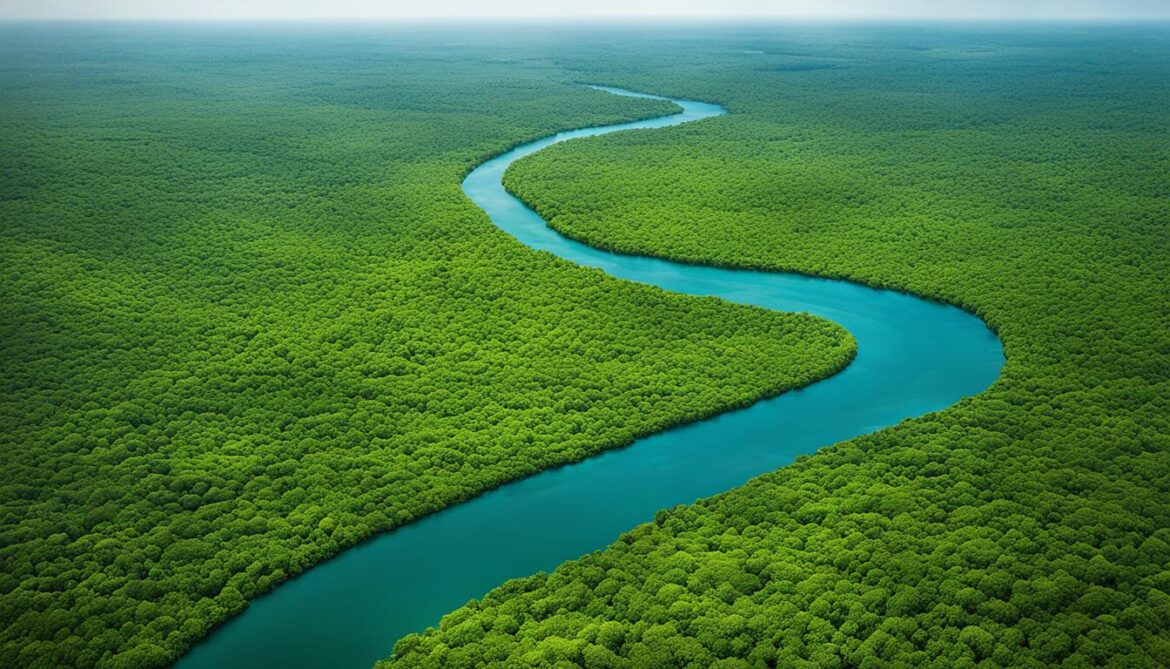
Sustainable agriculture practices play a crucial role in biodiversity conservation in Ivory Coast. Organic farming and agroforestry techniques are promoted to minimize the use of harmful chemicals, protect soil health, and enhance biodiversity. By embracing sustainable agriculture, Ivory Coast not only safeguards its natural resources but also supports local food production and economic growth for rural communities.
Research institutions also play a vital role in Ivory Coast’s conservation efforts. These institutions conduct scientific studies to understand the country’s flora and fauna, identify conservation priorities, and develop strategies to mitigate threats to endangered species. By collaborating with local communities, government agencies, and international partners, research institutions contribute valuable knowledge and expertise that inform conservation policies and actions.
“Conservation is not the sole responsibility of government organizations or environmental groups. It requires the collective effort of individuals, communities, and institutions to ensure the sustainability of Ivory Coast’s biodiversity.” – Dr. Aminata N’Diaye, Conservation Biologist
Sustainable Agriculture Initiatives
Ivory Coast has implemented a range of initiatives to promote sustainable agriculture and enhance biodiversity conservation. One such initiative is the promotion of shade-grown coffee and cocoa, which involves cultivating these cash crops under the shade of trees. By preserving existing tree cover and planting shade trees, farmers create habitats for birds, insects, and other wildlife while ensuring the productivity and quality of their crops.
Furthermore, agroforestry systems are being encouraged, which involve integrating trees within agricultural landscapes. These systems provide multiple benefits, such as soil conservation, improved water management, and increased crop diversity. By diversifying their agricultural practices, farmers contribute to biodiversity conservation and reduce the environmental impact of their activities.
Collaboration and Partnerships
Conservation efforts in Ivory Coast are strengthened through collaborations and partnerships with international organizations, NGOs, and local communities. For instance, the World Wildlife Fund (WWF) has been working closely with the Ivorian government to develop and implement conservation projects, such as improving protected area management, supporting sustainable tourism, and enhancing law enforcement against wildlife trafficking.
Local communities also play a crucial role in conservation efforts. Their traditional knowledge and practices contribute to the sustainable management of natural resources. Collaborative initiatives aim to involve communities in decision-making processes, providing them with incentives to protect and preserve their surrounding ecosystems.
Green Buildings in Ivory Coast
Ivory Coast is taking significant steps towards adopting sustainable architecture and energy-efficient construction practices. The country is fully embracing the concept of green buildings, which prioritize energy efficiency and environmental sustainability. One notable example of sustainable architecture in Ivory Coast is the Bamboo Pavilion, which showcases the country’s commitment to sustainable development and a greener future.
The Bamboo Pavilion stands as a remarkable testament to sustainable architecture in Ivory Coast. It incorporates renewable materials, passive solar techniques, natural ventilation, and efficient insulation, all of which contribute to its energy efficiency and eco-friendly design. This stunning structure demonstrates how intelligent design choices can harmonize with the environment and reduce the ecological footprint of buildings.
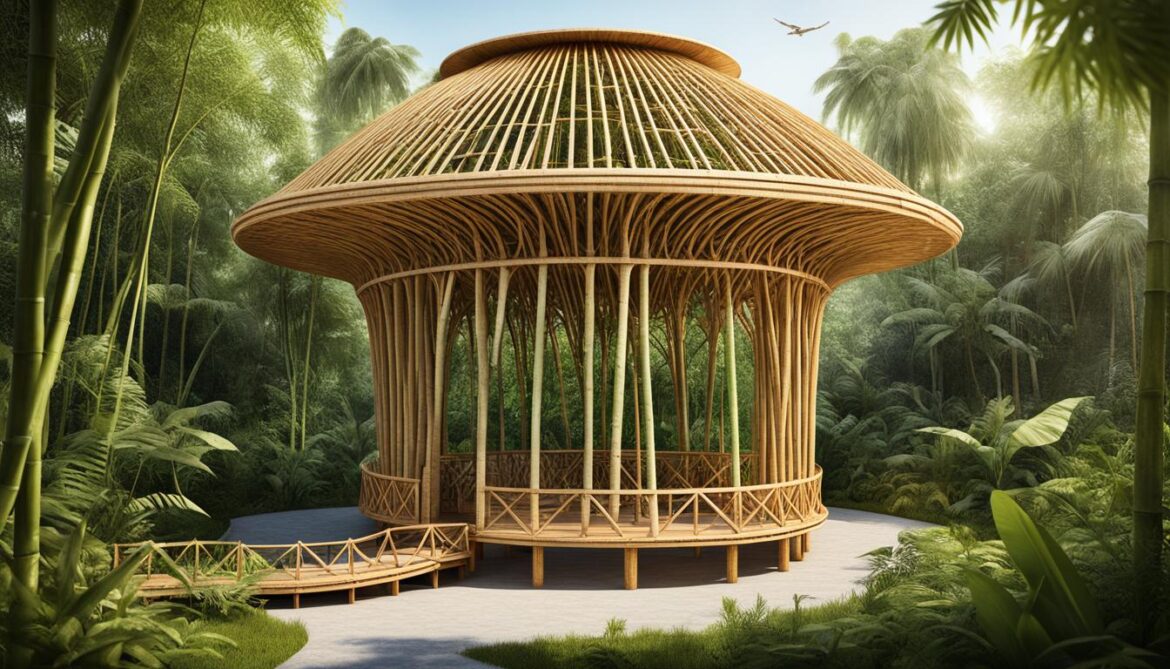
By integrating bamboo, a fast-growing and renewable resource, into the construction of the pavilion, Ivory Coast showcases its dedication to utilizing sustainable materials. Bamboo is not only abundant but also highly durable and aesthetically pleasing, making it an ideal choice for green building initiatives.
The Bamboo Pavilion’s passive solar techniques leverage the power of natural sunlight, reducing the need for artificial lighting and thus minimizing energy consumption. Additionally, the pavilion’s efficient insulation systems help maintain a comfortable indoor temperature while reducing reliance on energy-intensive heating and cooling systems.
Natural ventilation is another key feature of the Bamboo Pavilion. The design capitalizes on the natural airflow patterns, allowing for efficient air circulation and reducing the need for mechanical ventilation systems. This contributes to a healthier and more sustainable indoor environment.
“The Bamboo Pavilion is a prime example of how sustainable architecture can beautifully blend functionality, environmental consciousness, and cultural relevance. It serves as an inspiration for future construction projects in Ivory Coast and beyond.”
Ivory Coast’s commitment to sustainable development extends beyond the Bamboo Pavilion. The country recognizes that sustainable architecture and energy-efficient construction practices are integral to creating a greener and more sustainable future. By implementing these green building techniques, Ivory Coast is leading the way in promoting environmentally conscious design and construction practices.
Tanoé Forest: A Biodiversity Hotspot
The Tanoé Forest in south-eastern Côte d’Ivoire is a biodiverse haven buzzing with life. It is home to a remarkable range of bird species, mammals, plants, reptiles, and amphibians. The forest’s rich biodiversity makes it a critical habitat for several endangered primate populations, including the White-naped Mangabey, Roloway Monkey, and potentially Miss Waldron’s Red Colobus. Additionally, the Tanoé Forest provides a refuge for numerous bird species that BirdLife International has identified as conservation priorities.
Unfortunately, the Tanoé Forest faces various threats that put its unique biodiversity at risk. Small-scale agriculture, logging activities, and the expansion of palm oil plantations pose significant challenges to the forest’s ecological balance. To counter these threats and safeguard the Tanoé Forest’s natural treasures, conservation efforts are underway.
Community involvement plays a crucial role in the preservation of the Tanoé Forest. Rainforest Trust and local partner CSRS have taken the lead in establishing a community forest reserve, working collaboratively with the local community to protect the forest’s exceptional biodiversity.
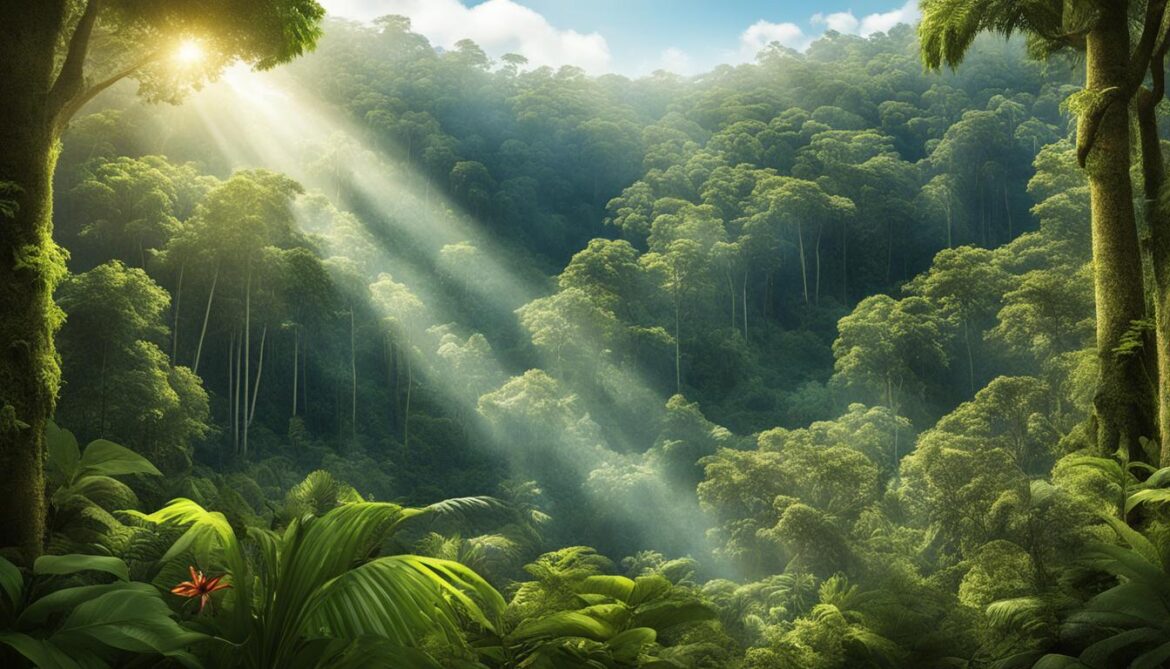
The image above captures the lush beauty of the Tanoé Forest, indicating the diverse ecosystem thriving within its boundaries. This visual representation showcases the natural wonders that conservation efforts aim to preserve.
Conclusion
Ivory Coast’s rich biodiversity is a valuable natural heritage that requires conservation efforts and sustainable development practices. The country has implemented key policies and governance approaches to protect and manage its biodiversity, acknowledging the importance of preserving its unique flora, fauna, and ecosystems.
While there are still challenges to overcome, such as overlapping institutions and limited knowledge, conservation initiatives, community involvement, and research institutions are actively working towards the preservation of Ivory Coast’s biodiversity. These efforts aim to address threats like deforestation, invasive species, pollution, and habitat destruction, which pose significant risks to the long-term survival of the country’s diverse species.
By prioritizing the protection of its natural resources and fostering collaboration, Ivory Coast can shape a sustainable future that balances economic development with the conservation of its biodiversity. Continued efforts and cooperation from all stakeholders will be crucial in ensuring the preservation of Ivory Coast’s natural heritage for future generations to enjoy.



